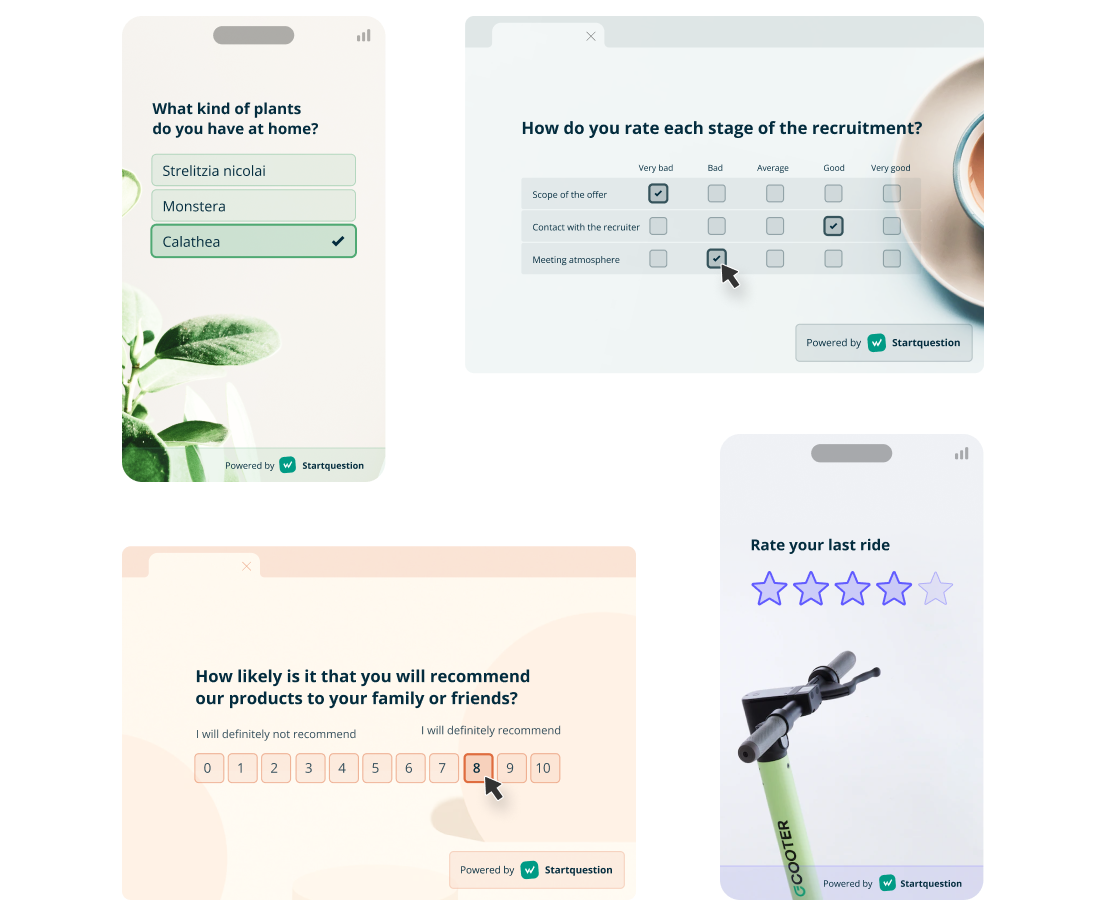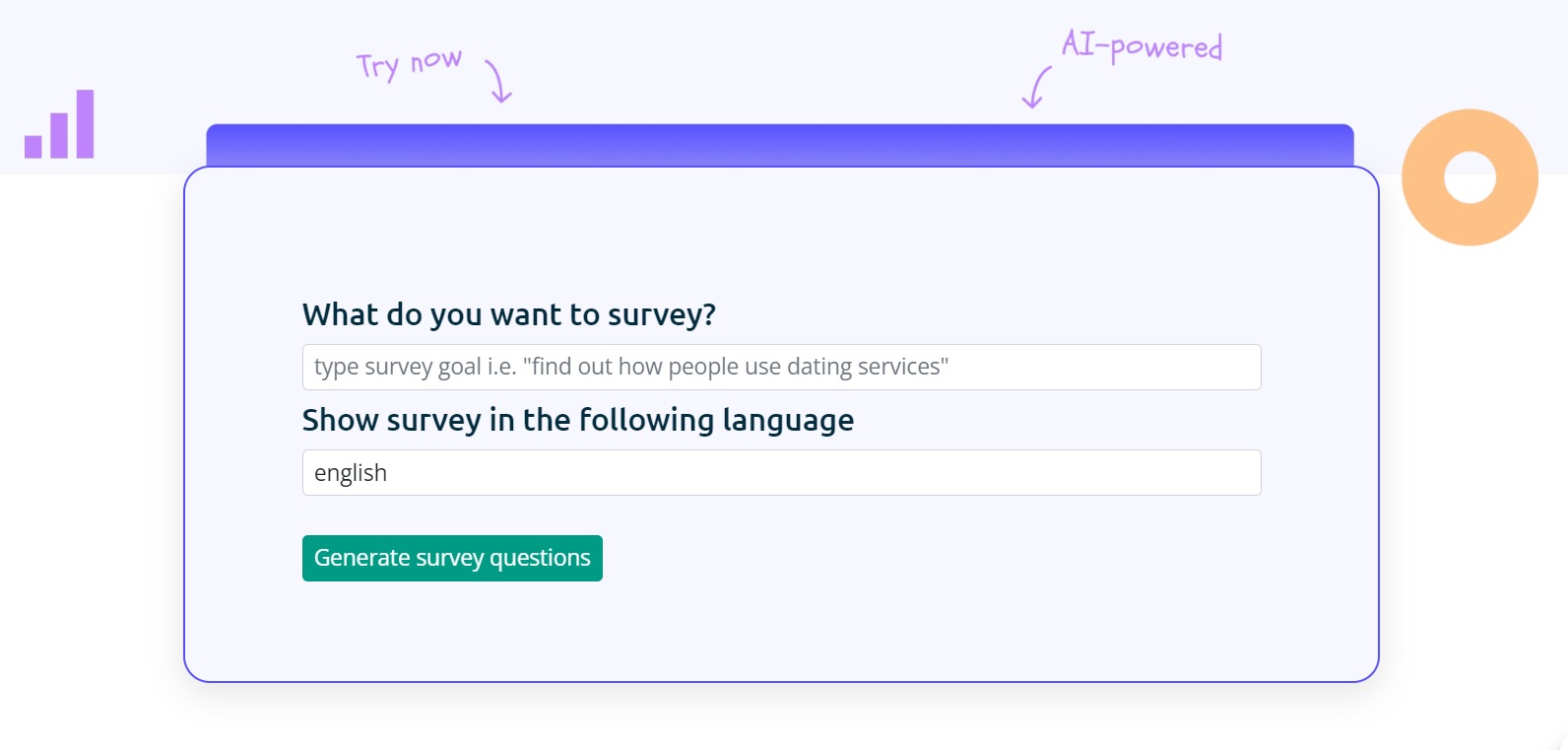
Structure the survey into logical sections covering different patient experience aspects. For example, you can have units on appointment scheduling, waiting room experience, healthcare provider interactions, communication, and overall satisfaction. It helps respondents navigate the survey and makes analysis more accessible.
Keep the survey length reasonable to encourage participation and minimize respondent fatigue. Prioritize the most critical questions and avoid unnecessary repetition. Ideally, the survey should take a couple of minutes to complete.
Before deploying the survey, conduct a pilot test with a small group of patients to evaluate the questions’ clarity, relevance, and effectiveness. Make necessary adjustments based on their feedback and ensure the survey is user-friendly.
Collect feedback such as age, gender, ethnicity, and healthcare utilization to provide context for the survey results. However, consider privacy and data protection regulations when collecting and analyzing such information.
Assure patients that their responses remain anonymous and confidential to encourage honest feedback. Consider using unique identifiers instead of personal identifying information to link responses to demographic data if needed.
Communicate the survey purpose, importance, and timeline to patients to encourage participation. Determine when and how you will administer the survey, whether during a specific period or continuously. Consider using multiple communication channels (email, website, waiting room posters) to reach a wider audience.
Analyze and interpret collected data to identify trends, patterns, and areas for improvement. Utilize statistical analysis for quantitative data and categorize and summarize qualitative responses. Present the findings clearly and meaningfully, highlighting key takeaways and actionable recommendations.
Share the survey results with relevant stakeholders, including healthcare providers, administrators, and staff. Use the feedback to drive quality improvement initiatives, address identified issues, and enhance the patient experience. Communicate the actions taken based on the survey results to demonstrate that patient feedback is valued and leads to positive changes.
Regularly repeating satisfaction surveys allows healthcare facilities to monitor and continuously improve existing patients’ experiences.

Enough theory. Let’s get to the practice. It’s time to prepare a patient satisfaction survey questionnaire that will allow you to collect valuable feedback.
We have prepared a list of 15 questions to use in the questionnaire. We also have a ready-made template for a patient satisfaction survey and an online survey generator powered by AI, with which you can create any research in just 60 seconds.
1. What was your experience with booking
2. How would you rate our staff
3. Did the medical professionals provide you with clear next steps
4. What do you think about our prices?
5. Are you satisfied with the digital experience we provide?
6. How would you rate the overall quality of care you received during your visit?
7. Did the healthcare staff treat you with respect and courtesy?
8. Did the healthcare staff communicate clearly and effectively with you?
9. Were you involved in the decision-making process regarding your treatment or care?
10. How satisfied were you with the cleanliness and comfort of the facilities?
11. Did you receive clear instructions on how to manage your condition at home?
12. How would you rate the timeliness of your appointments or procedures?
13. Were your privacy and confidentiality protected during your visit?
14. Did you feel that your concerns and questions were adequately addressed?
15. Would you recommend this healthcare facility to family and friends?
We understand that every medical facility has a unique patient population, meaning that satisfaction survey questionnaires will differ for a hospital, maternity clinic, extended medical care facility, or dental office.
To simplify your work, we offer sample questions and satisfaction survey templates. Additionally, we have developed an AI-powered survey creator that can generate tailored questions for your medical facility in less than a minute. All you need to do is enter the appropriate command and select the language.
We invite you to try it out and see how it can assist you in your work.

You may conduct satisfaction surveys at different stages of the healthcare process to receive feedback and evaluate the quality of care provided, regardless of how you prepare them.
One common practice is distributing surveys to patients after their appointments or consultations. It allows them to provide feedback on their experience, including communication with hospital or physician practices, wait times, and overall satisfaction with the visit.
After leaving the hospital, patients can take a satisfaction survey to provide feedback on their care. It includes rating the quality of care provided, the attentiveness of the medical staff, pain management, cleanliness, and any concerns they may have had during their stay.
Patients who have received treatments or undergone specific procedures can be given surveys to evaluate their experiences and outcomes. It helps identify improvement areas, measure the intervention’s effectiveness, and gauge patient satisfaction with the overall process.
For patients who receive long-term care or are involved in chronic disease management programs, it’s helpful to conduct occasional surveys. Such research can help track patient satisfaction and gather feedback on the quality and effectiveness of ongoing care.
After being discharged, patients may receive satisfaction surveys to evaluate their experience throughout the care process. The surveys cover the discharge process, post-treatment instructions, medication management, and overall satisfaction with the care provided.
Regarding patient satisfaction surveys, it’s important to remember that the timing and frequency can differ based on factors such as the healthcare setting, survey goals, and available resources for collecting and analyzing data.
In addition, various methods can be used, like online surveys, phone interviews, or paper-based questionnaires, depending on the organization’s patient population and operational requirements.
The method and way you choose to obtain feedback and, as a result, improve the satisfaction and loyalty of your patients depends only on you and your organization’s needs.
We will be delighted if we can accompany you on this journey.

Author: Dariusz Jaroń
Updated: 26 June 2023
Content marketing specialist and author of non-fiction books with many years of experience in B2B writing, journalism, and translations. Beginner marathon runner and intermediate mountain hiker. When he isn't writing or jogging, he's probably trying to learn Italian.

With Startquestion, collecting this data is effortless, and our specialists can help implement the receipt surveys in your company.

A successful closed-loop system enhances the customer experience, drives innovation, strengthens brand loyalty, and boosts the bottom line. Learn how to harness the power of feedback, close the loop, and unlock your business's full potential.

Understanding your customers' experiences can elevate your business from good to great. Customer journey mapping, a powerful visual tool, uncovers every interaction customers have with your brand, highlighting pain points and opportunities for improvement.
Quality and safety guarantee:

This site is secured by reCAPTCHA and Google. Valid Privacy Policy and Terms of Service.
Manage cookieGet Feedback Racino Sadowski Skowronek s.j. as the Personal Data Controller, processes your personal data using cookies to ensure the proper functioning of the website. You can manage your preferences by selecting the appropriate button by clicking "Accept all cookies" or "Decline cookies” or “Manage your cookies”. You can withdraw your consent at any time by changing the selected settings. More information about the use of cookies and the processing of your personal data, including your rights, can be found in our Privacy Policy.
Functional Functional Always activeStorage of or access to technical data is strictly necessary for the legitimate purpose of enabling the use of a specific service expressly requested by the subscriber or user, or for the sole purpose of carrying out the transmission of a message over an electronic communications network.
Preferences PreferencesStorage or technical access is necessary for the legitimate purpose of storing preferences that are not requested by the subscriber or user.
Statistics StatisticsTechnical storage or access that is used exclusively for statistical purposes. Technical storage or access that is used solely for anonymous statistical purposes. Without a subpoena, voluntary compliance from the ISP, or additional records from a third party, information stored or retrieved solely for this purpose usually cannot be used to identify you.
Marketing MarketingStorage or technical access is required to create user profiles for the purpose of sending advertisements or tracking a user on a website or on several websites for similar marketing purposes.